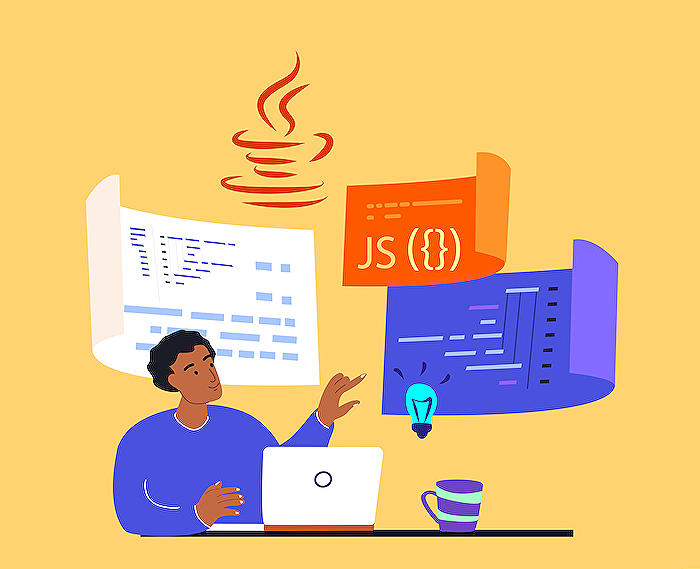- All of Microsoft

OpenAI & JavaScript: Creating Your Personal Copilot - Part 3
Continue the journey of creating your own Copilot with JavaScript & OpenAI, focusing on moderation to enhance user safety.
Part 3 of an informative mini-series by author Lewis Baybutt [MVP], that delves into creating your own virtual assistant using JavaScript and OpenAI, focusing more on the aspect of moderation this time around. More info here
The author suggests using GitHub's AI tool to check all values in the moderation results object, ensuring none of the properties have a true value. This is done to ensure harmful responses are blocked from being seen by users unless all moderation checks have returned false.
A simple code snippet that checks for true values across all properties in the object moderationResults is provided. This code uses Object.values() to create an array of all values, and every() to check if all of them are false, thus indicating the response is safe. If all values are false, the ‘isSafe’ variable becomes true.
Additional guidelines are provided for using the AI-enabled assistant, such as allowing the tool to generate and choose suitable code modifications.
However, this is just a starting point and the author mentions more work is required before this modified code can be used.
The aim is to prevent users from receiving responses that may have been negatively moderated. If the constant ‘isSafe’ equals true, users will be shown responses otherwise it's halted. In short, replies are logged to the console only after passing moderation.
This marks the end of the author's enlightening series, providing readers with sufficient knowledge to build their own command line assistant using JavaScript and OpenAI’s API. To ensure ethical usage, it’s important to remember that OpenAI's model conforms to strict guidelines prioritizing safety and enhancing positive interactions.
Exploring The World of Virtual Assistants With JavaScript and OpenAI
In an ever-growing world of technology, learning to create a customized AI assistant using coding languages like JavaScript and tools provided by OpenAI is now possible.
These virtual assistants or 'copilots' are capable of understanding and responding according to user queries, enhancing user experience and interaction.
Modern technology allows these assistants to cross-verify information provided by users, ensuring safety.
For instance, checks are in place to ensure all responses are filtered before reaching the user, hence maintaining ethical guidelines.
The trick lies in training these AI assistants accurately, given the richness and complexity of human communication.
Platforms like OpenAI and GitHub have proven instrumental in achieving this, consequently bridging the gap between humans and technology.
To conclude, the rise of such AI-enabled tools marks a new era in technology, continuously striving to break barriers of limited interactivity while ensuring user safety and ethical usage.
Read the full article Build your own Copilot with JavaScript and OpenAI – Part 3

Learn about Build your own Copilot with JavaScript and OpenAI – Part 3
In the third entry of a blog series on Microsoft's Copilot, the focus is firmly on enhancing the moderation element for user safety. Coding enthusiasts seeking to construct their personalized, command-line Copilot can study the steps outlined in this article. This document provides details on making adjustments to your code using Microsoft's Copilot, designed to safeguard the end-user from undesirable responses. This blog suggests that by modifying the code, the reader would ensure that replies are blocked from user view, unless moderation checks are passed with false results for every examination.
Before commencing, the blog urges readers to familiarize themselves with the context and instructions provided in the first two parts of the series. After this, one can proceed with the modification process outlined in the article. An invaluable first step would be introducing a check against the values in your moderation results.
- The moderation results object, a previously logged object directly, is replaced with a constant, improving the effectiveness and accuracy of the moderation results.
The subsequent steps involve using this newly created constant in the code and ensuring none of them carry a true value. To assist in this, Microsoft's Copilot offers code suggestions, making the process easier and smoother. The result is an improved method for verifying all properties in the 'moderationResults' object.
Check: The code provided serves as a tool that verifies the correctness of the user responses. It uses the 'Object.values()' method to receive an array of all values in 'moderationResults'. Following that, 'every()' is deployed to establish that every value is false. This ascertains the safety of the user’s responses.
- Based on this setup, users won't receive any response unless it passes the moderation test.
Thus, the reader can use the instructions in the article to enforce more stringent moderation practices, in effect shielding the users from negatively moderated factors. Finally, the blog touches on the ethical guidelines outlined by OpenAI, emphasizing safety, respect, and the promotion of positive interactions.
In summary, anyone interested in advancing their knowledge on building an effective and safe command line Copilot using JavaScript and OpenAI’s API will find this blog beneficial. Regular exposure to such content is suggested, subscribing to updates to stay abreast in this dynamic field.
More links on about Build your own Copilot with JavaScript and OpenAI – Part 3
- How to build a GPT-3 App with Nextjs, React, and ...
- Jul 25, 2023 — In this step-by-step tutorial, you will learn how to use GitHub Copilot to build an application with OpenAI's gpt-3.5-turbo model.
- Build your own Copilot with JavaScript and OpenAI - Part 2
- 6 days ago — In that blog post we looked at building a Copilot bot from scratch with OpenAI's API and JavaScript. So now, in this post, we'll take that bot ...
Keywords
Build Copilot JavaScript, OpenAI tutorial, JavaScript OpenAI Copilot, Create Copilot JavaScript, Develop JavaScript AI, OpenAI Third Part, Part 3 Copilot JavaScript, Learn OpenAI JavaScript, Building Copilot OpenAI, JavaScript AI Guide